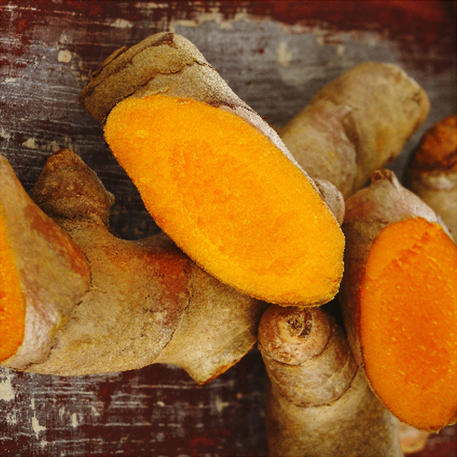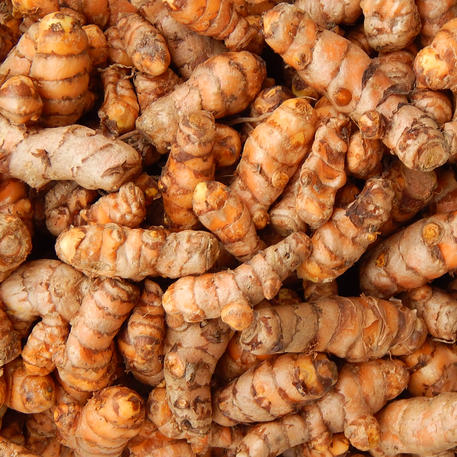-
Filter By Stock
- In Stock (0)
TURMERIC
BOTANICAL NAME: Curcuma domestica syn. Curcuma longa
COMMON NAMES: Turmeric, Indian Saffron, Ukon
FAMILY: Zingiberaceae, the ginger family
ORIGIN: Believed to have been first domesticated in South or Southeast Asia
PLANT DESCRIPTION
Turmeric is an upright, herbaceous, perennial plant growing to about 1 metre tall from an underground rhizome. It produces tall, very beautiful, white flower spikes when left to grow for a year. The flower is so attractive that it is worth growing for this alone. The root has a warm, bitter, black pepper-like flavor and earthy, mustard-like aroma
USES
Turmeric is one of the most common flavourings used in Asian cuisine. To make a powder, the harvested rhizomes are boiled and sun-dried for 7-8 days and then ground into a powder using the blender, but may also be used fresh. Turmeric is also used as a yellow food dye, replacing tetrazine. The leaves may also be wrapped around fish flavouring it during the cooking process. In Indonesia, the young shoots and rhizome tips are eaten raw.
The root is a source of yellow and orange dyes for silk and wool and is most notably used for colouring the robes of Buddhist monks. It is recognized in the dyeing industry as one of the 'direct colours', capable of dyeing cotton without a mordant. However, as the pigment is extremely sensitive to light, it easily discolours, and when applied to cotton, wool or silk it is usually used in a weak solution of acetic acid or alum. Alkali in the dye bath can be used to impart a reddish hue.
The root also has insecticidal, fungicidal and nematicidal properties which make it a potential biocide.
PLANTING GUIDE
Turmeric requires a well-drained soil, frost-free climate and 1000 to 2000mm of rain annually or supplementary irrigation. It thrives best on loamy or alluvial fertile soils and cannot stand waterlogging. It grows best in areas where annual daytime temperatures are within the range 20-28°C, but can tolerate 18-32°C.
Rhizomes should be planted around the start of Spring into warm soil. Rhizomes displaying one or two buds should be planted 5-7cm deep in ridges around 30-45cm apart with a spacing of 15-30cm between plants.
In cooler areas turmeric can be grown in glasshouses.
Rhizomes are harvested 9 to 10 months after planting, when the lower leaves are turning yellow or the stems drying and falling over - all indications of maturity. Bandicooting is also possible by digging carefully at the side of a clump and remove tubers as needed rather than harvesting the whole clump.
Anti-inflammatory Shots
A home nutrient boost which is high in vitamin C, antioxidants, and proven antiviral components. This quick tonic has been proven useful in soothing sore throats, and curing upset stomachs.
Both ginger and turmeric are well known for their anti-inflammatory and disease-preventing properties and when combined with orange juice it is super easy to prepare.
- 1/2 cup of freshly squeezed orange juice
- 12 mm piece of fresh ginger, grated
- 12 mm piece of fresh turmeric, grated
- 2 tablespoons of honey
Place all the ingredients in blender and process. Strain. Drink 5 to 10ml as necessary.
COMPANION PLANTS
Likes: Eggplant, Capsicum, Chilli, Tomato, Bean, Pea, Coriander

TURMERIC - GOLDEN (Tuber) (Pack of 8)
***NOT TO TAS, WA*** (Curcuma longa) Also known as 'Indian Saffron'. Perennial & part of the ginger family. Tuber with thick brown skin & yellow/o
$12.95

TURMERIC - MADRAS (8 Tubers)
***NOT TO TAS, WA*** (Curcuma longa) Heirloom named after the town of 'Madras' in India where it was largely traded from. It was the preferred choi
$12.95
